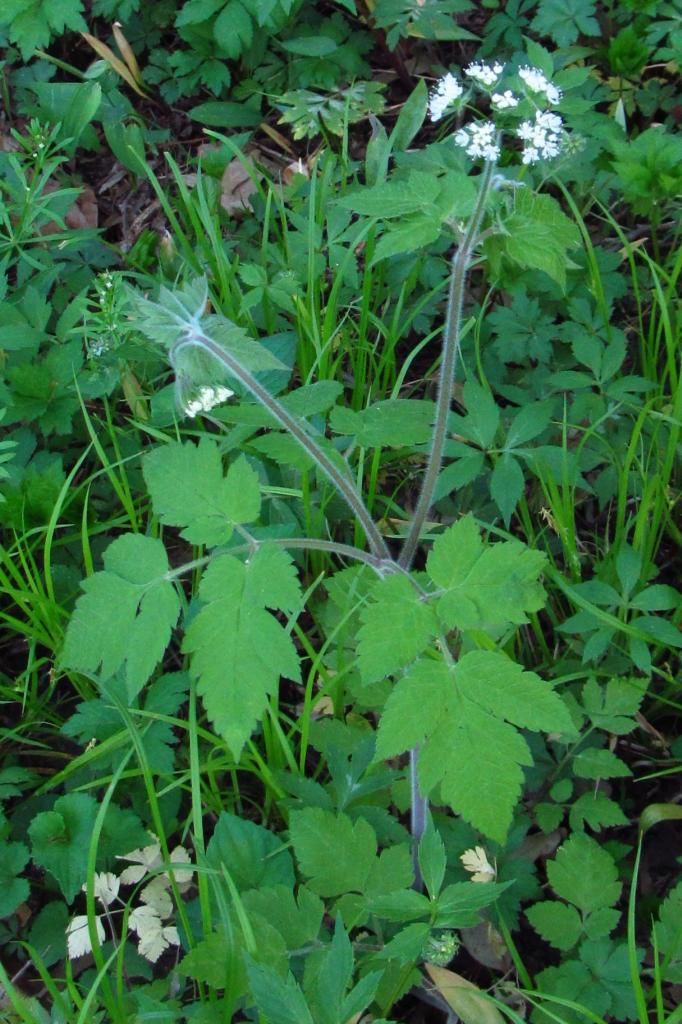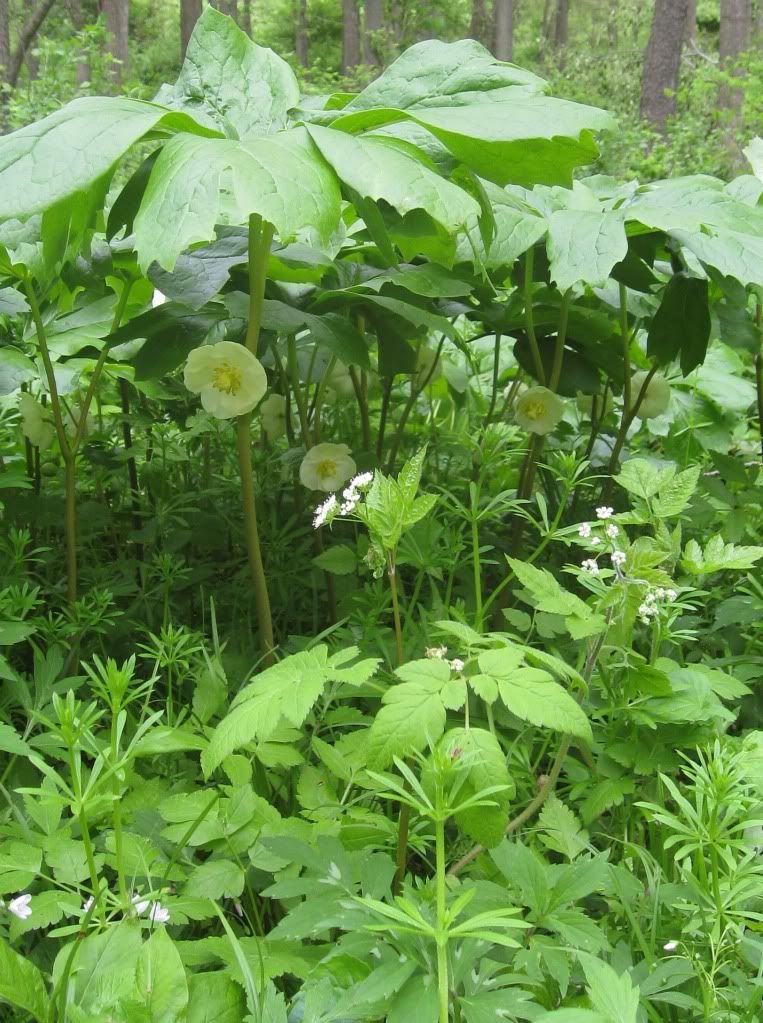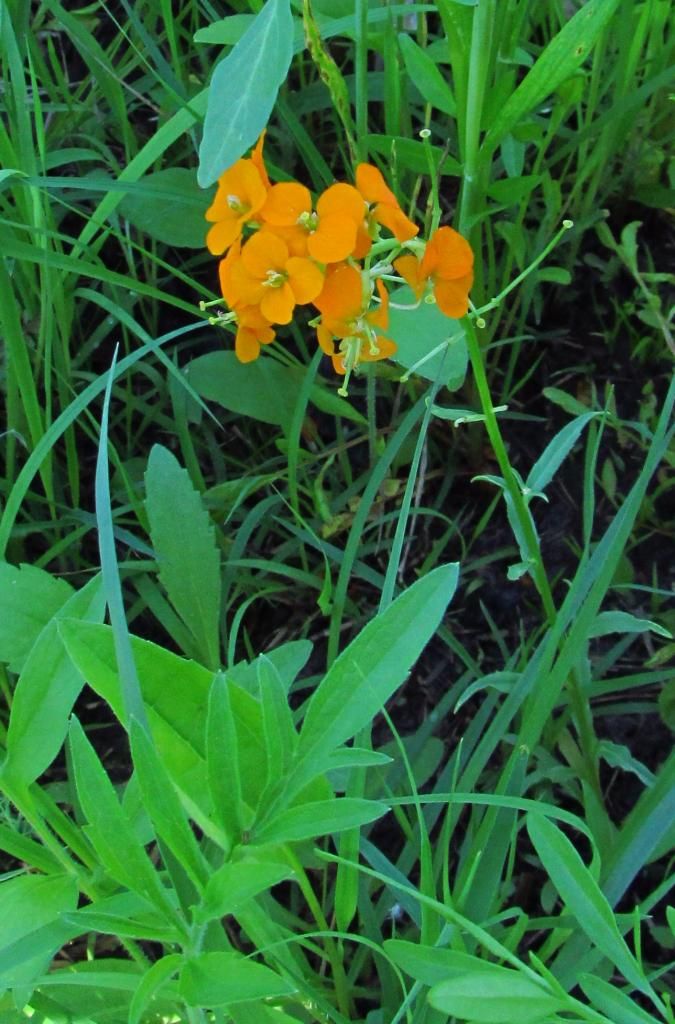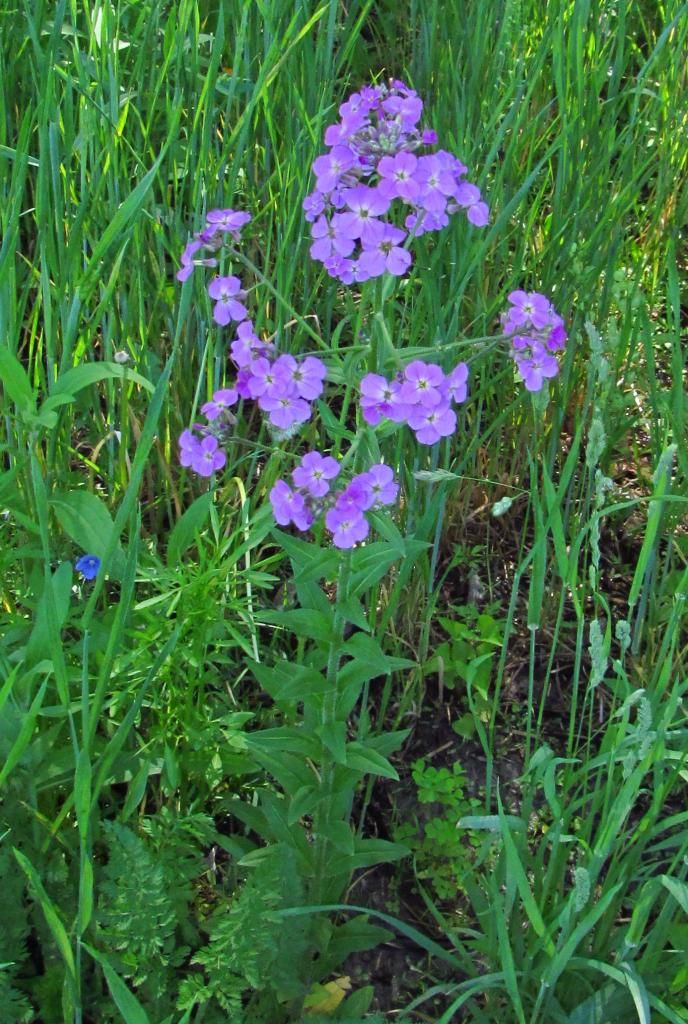This week’s featured wildflower usually starts blooming in central Iowa in May and can sometimes be found in June. The small white flowers may resemble other native plants, but the licorice smell that emerges when you rub the leaf or stem is unmistakable. Several photos of Osmorhiza longistylis, commonly known as sweet cicely, anise root, wild licorice, longstyle sweetroot, or sweet anise, are after the jump.
I hope some Bleeding Heartland readers will help identify two colorful flowers I’ve featured below as well. Although I found them on a restored prairie patch, I’m not convinced they are native to Iowa.
This is an open thread: all topics welcome.
This plant is native to most of the U.S. and Canada, including the whole Midwest. The leaves are large, toothed and divided into three parts. Here’s how sweet cicely looks shortly after it has emerged, before the tiny flowers have opened up.
Soon the groups of flowers emerge.
In this shot, you can see the top of a littleleaf buttercup near the bottom right.
This picture features a stand of May apples (umbrella plants) in bloom behind the sweet cicely. Some open spring beauties are near the lower left corner.
According to Wildflowers of Iowa Woodlands by Sylvan Runkel and Alvin Bull, native Americans used sweet cicely to treat sore throat or open sores. Early European settles sometimes chewed the root or used it to impart a licorice flavor to cookies, cakes, and candies.
Sweet cicely isn’t the most eye-catching spring wildflower in Iowa. In contrast, these red and orange blooms provide a sharp contrast on the new prairie patch in Windsor Heights (just off the bike trail or behind Sherwood Forest strip mall). I have seen non-native plants on this prairie patch before, and the orange four-petaled flowers don’t look like anything in my prairie wildflowers book.
Here’s a closer look at the orange flowers. These clusters are no more than 12 to 18 inches off the ground.
In some ways those flowers look like Dame’s rocket, a European native that has spread widely in Iowa. You’ve probably seen it if you’ve been on a central Iowa bike trail lately. But Dame’s rocket (considered an invasive plant) is usually pink or white, and grows much taller, two to four feet high. Here’s a recent photo:








1 Comment
I agree...
…that those orange flowers do not look like any Iowa native flower I’ve ever seen. And they do look like they might be some kind of mustard. The crimson flower looks like it might be some kind of Eurasian clover, but I’ve never seen that eye-popping red before.
I just looked online and it looks like that orange-flowered plant might be Western Wallflower, a mustard that is native to the western U.S. But the range seems to extend as far east as North Dakota.
PrairieFan Tue 9 May 9:20 PM